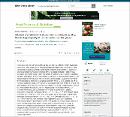| dc.contributor.author | Kaddumukasa, Phoebe P. | |
| dc.contributor.author | Imathiu, Samuel M. | |
| dc.contributor.author | Mathara, Julius M. | |
| dc.contributor.author | Nakavuma, Jesca L. | |
| dc.date.accessioned | 2022-02-17T10:59:02Z | |
| dc.date.available | 2022-02-17T10:59:02Z | |
| dc.date.issued | 2017-08-19 | |
| dc.identifier.citation | Kaddumukasa, Phoebe P...et al (2017).Influence of physicochemical parameters on storage stability: microbiological quality of fresh unpasteurized fruit juices. Wiley Online Library: Food Science & Nutrition.https://doi.org/10.1002/fsn3.500. | en_US |
| dc.identifier.uri | https://doi.org/10.1002/fsn3.500 | |
| dc.identifier.uri | https://kyuspace.kyu.ac.ug/xmlui/handle/20.500.12504/602 | |
| dc.description | 1098-1105 p. | en_US |
| dc.description.abstract | Fresh juices rich in health and nutritional benefits are valued for their fresh flavor, taste, and aroma. These juices' quality however is affected by factors like temperature, light, and microbiological contamination significantly changing physicochemical parameters and storage stability. Physicochemical and microbiological analyses of passion fruit, pineapple, and mango juices in dark and light bottles at 24°C and 4°C were conducted in Kampala, Uganda for 12 days. Physicochemical parameters significantly reduced (p < .05) storage stability of fresh juices, while no significant changes (p > .05) were observed for the microbiological analyses. pH values ranged from 3.0 to 4.2 (dark) bottles and 2.9 to 4.0 (light) bottles for juices at 24°C and 4°C. °Brix values were from 1.0 to 5.5 for dark and clear bottles at 24°C and 4°C. TTA (%) values ranged from 1.1 to 7.2 (dark) bottles and 1.1 to 7.4 for (light) bottles at 24°C and 4°C. Ascorbic acid content ranged from 3.5 to 61.0 mg/ 100 ml and 5.5 to 56.7 mg/100 ml for juices in dark and clear bottles, respectively. total plate counts ranged from 1.3 × 10___ to 3.3 × 107 CFU/ml (dark bottles at 24°C) to 3.5 × 10³ to 3.3 × 108 CFU/ml (dark bottles at 4°C). For juices in light bottles, total plate counts ranged from 1.8 × 10___ to 8.0 × 107 CFU/ml (24°C) and 2.7 × 10___ to 1.5 × 108 CFU/ml (4°C). High microbial loads suggest the use of poor processing techniques and lack of good hygiene which lower quality and reduce storage stability of juices. Storage temperature greatly reduces physicochemical parameters both at ambient and refrigeration temperatures. This implies that temperature control for unpasteurized juices is critical in order to inhibit microorganism metabolic activities which accelerate biodeterioration leading to spoilage and short shelf life. Fresh unpasteurized juices stored at 24°C and 4°C may safely be consumed within 1 and 2 days, respectively. | en_US |
| dc.language.iso | en | en_US |
| dc.publisher | Wiley Online Library: Food Science & Nutrition | en_US |
| dc.relation.ispartofseries | Vol.5;Issue 6 | |
| dc.subject | Physicochemical parameters | en_US |
| dc.subject | Storage stability | en_US |
| dc.subject | Microbiological quality | en_US |
| dc.subject | Fruit juices | en_US |
| dc.subject | Fresh juices | en_US |
| dc.title | Influence of physicochemical parameters on storage stability: microbiological quality of fresh unpasteurized fruit juices | en_US |
| dc.type | Article | en_US |

